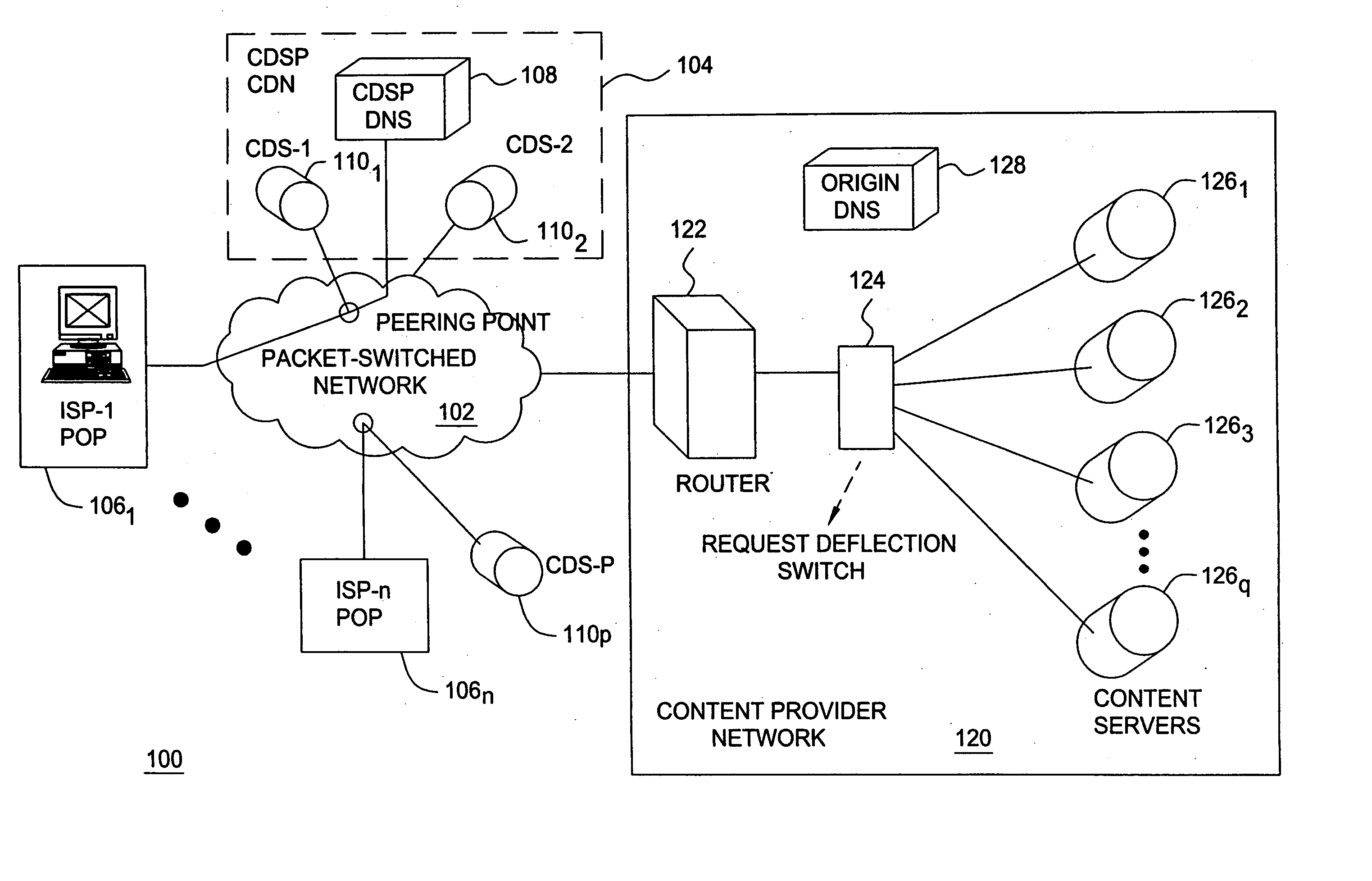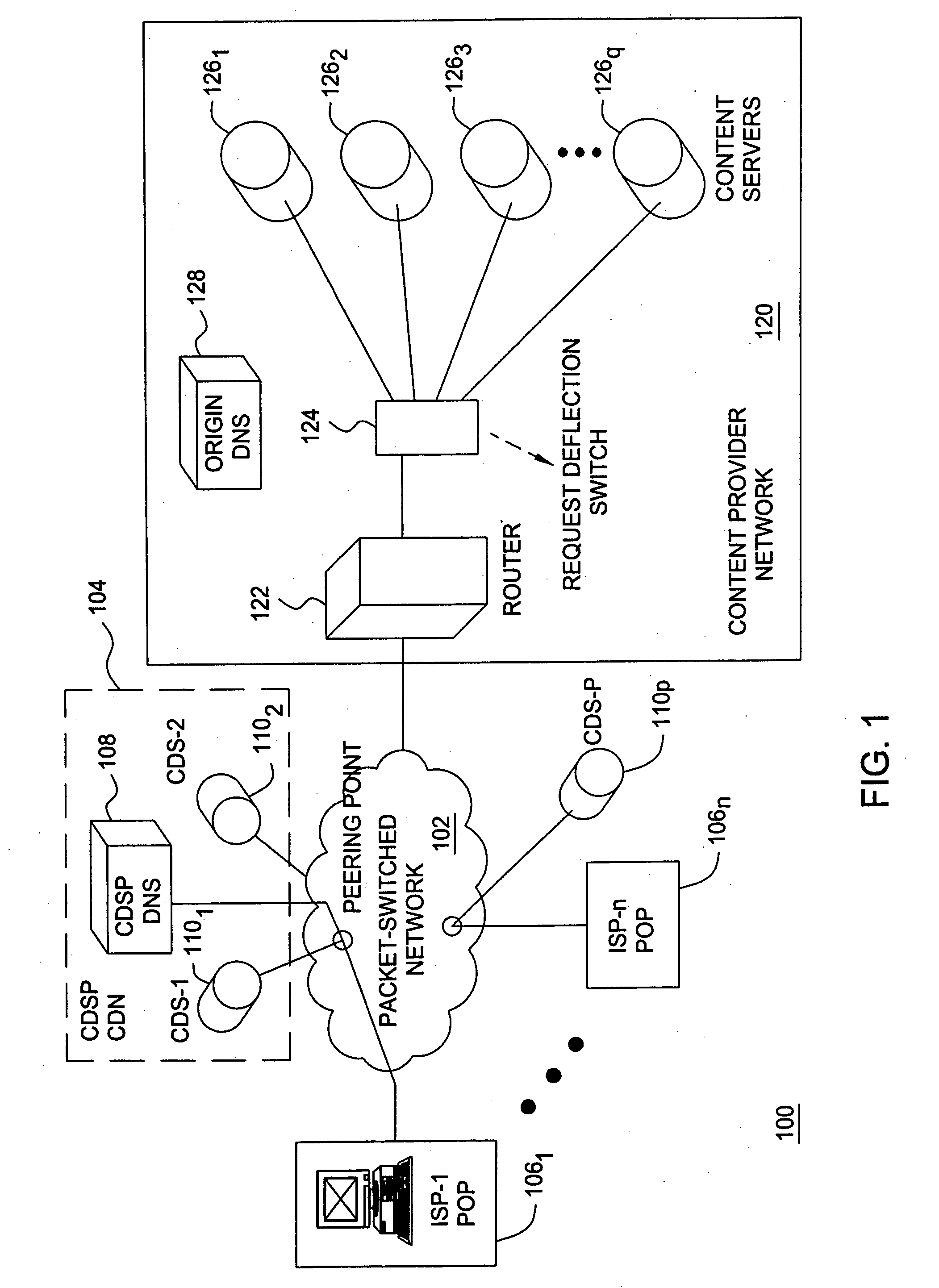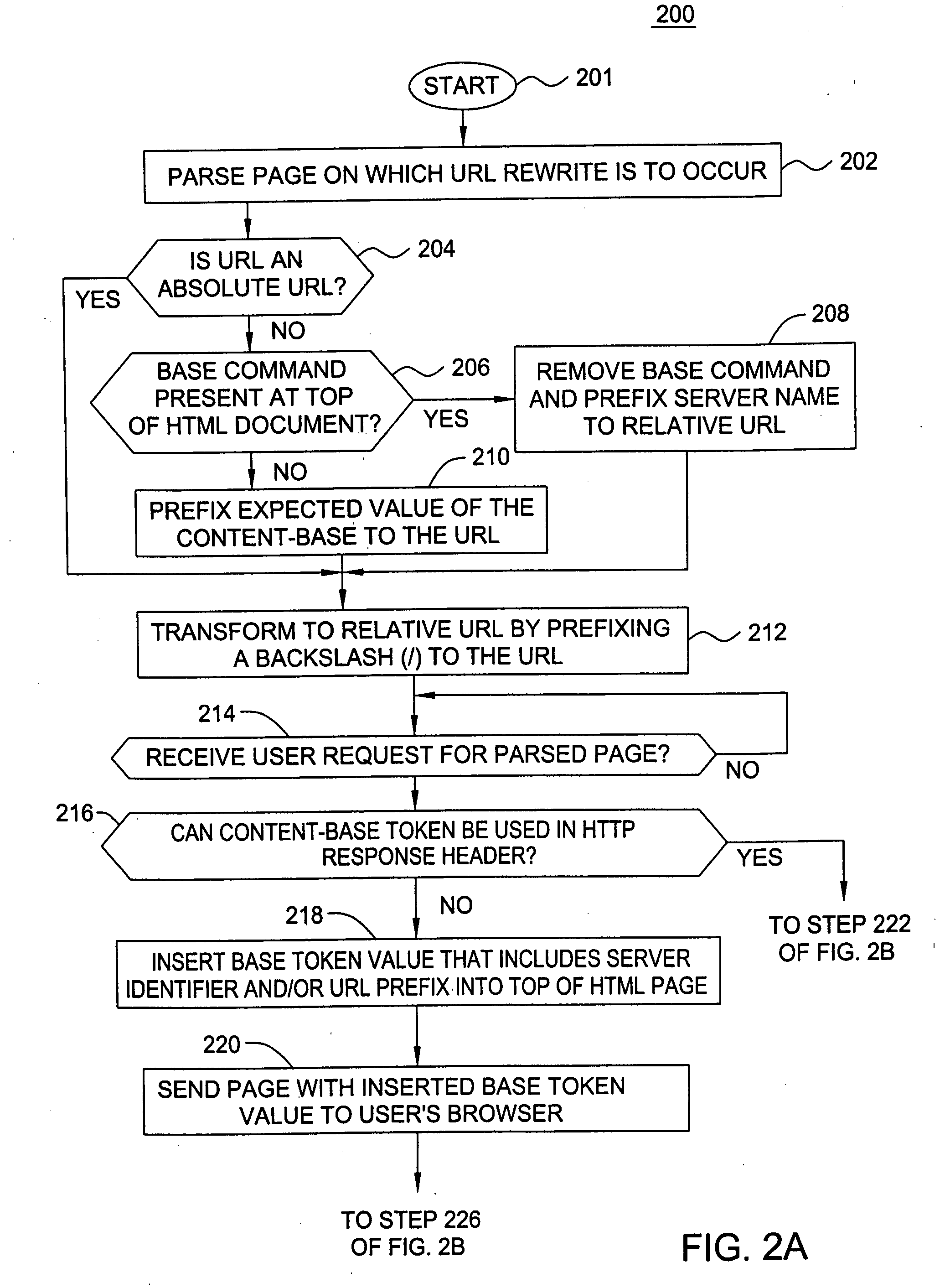User specific request redirection in a content delivery network
a content delivery network and user specific technology, applied in the field of user specific request redirection in the content delivery network, can solve the problems of inflexible dns, inability to provide user specific request redirection, and inability to work with techniques,
- Summary
- Abstract
- Description
- Claims
- Application Information
AI Technical Summary
Problems solved by technology
Method used
Image
Examples
Embodiment Construction
[0031] The present invention provides a method and apparatus of providing user specific request redirection in a content delivery network based on either a HTTP response header modification with a Content-Base token, or in an instance where a Content-Base token in a HTTP response header cannot be used, inserting a Base token value within a hypertext markup language (html) page, both of which enables user specific redirection to be implemented very efficiently. The method and apparatus are referred to as “Request Deflection.” One advantage of request deflection is that it may be implemented in a switch at the packet level and at wire-speed.
[0032]FIG. 1 depicts a high-level block diagram of an exemplary network 100 suitable for implementing the present invention. The network 100 comprises a plurality of Internet Service Provider (ISP) points of presence (POP) 1061 through 106n (collectively ISP-POPs 106), at least one content delivery network (CDN) 104, which is operated by a content...
PUM
 Login to View More
Login to View More Abstract
Description
Claims
Application Information
 Login to View More
Login to View More - R&D
- Intellectual Property
- Life Sciences
- Materials
- Tech Scout
- Unparalleled Data Quality
- Higher Quality Content
- 60% Fewer Hallucinations
Browse by: Latest US Patents, China's latest patents, Technical Efficacy Thesaurus, Application Domain, Technology Topic, Popular Technical Reports.
© 2025 PatSnap. All rights reserved.Legal|Privacy policy|Modern Slavery Act Transparency Statement|Sitemap|About US| Contact US: help@patsnap.com



